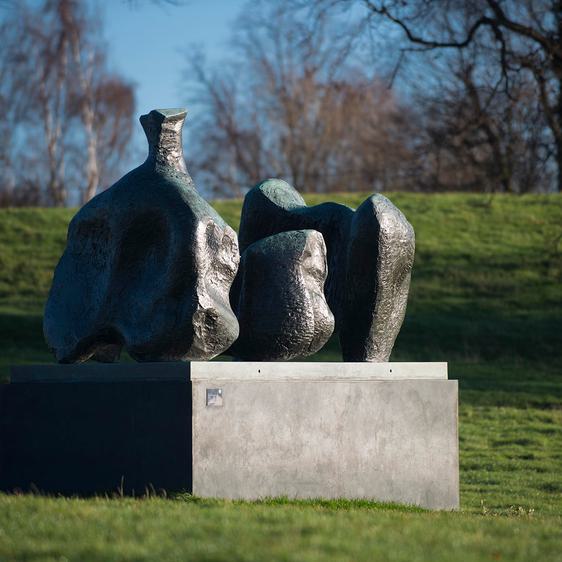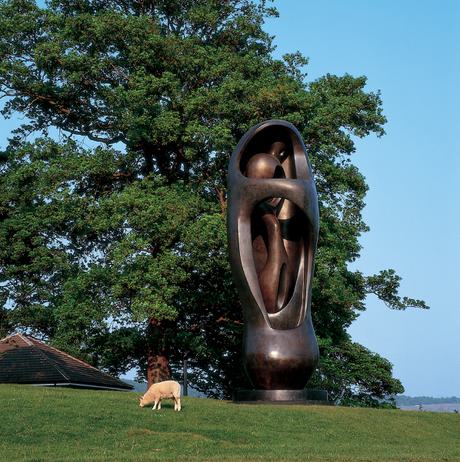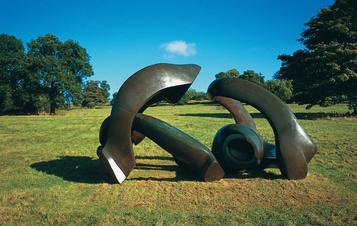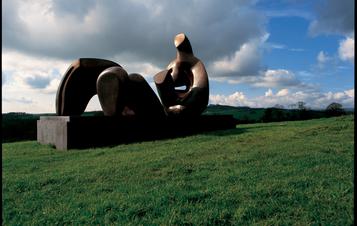
About Henry Moore in Bretton Country Park
In 1994, Yorkshire Sculpture Park was proud to present a large number of Henry Moore’s sculptures in the Bretton Country Park and an exhibition of nine rarely seen carvings on loan from the Henry Moore Foundation.
The sculptures in this 1994 exhibition of Henry Moore’s magnificent sixteen bronze sculptures were specifically selected to relate to the rugged and open nature of the park. The exhibition included the first public showing in Europe of the seven metre high Large Upright Internal/External Form cast in 1981. The sculptures were sited to encourage visitors to explore the park and to discover the relationship between art and nature.
The Late Carvings
An exhibition of nine rarely seen carvings, on loan from the Henry Moore Foundation, celebrated Moore’s return to carving following the success of his huge Reclining Figure in travertine marble carved in 1957-58 for the Unesco Headquarters in Paris.
The works reflect the two themes which occupied Moore throughout his long career, namely the reclining figure and mother and child. The exhibition included two mother and child sculptures, one in rosa aurora marble from 1967 and another made from a stalactite of 1978.
These carvings have a refinement to them which, to quote Peter Fuller on Moore’s late work, ‘manifests that quality of tender authority which one associates with the old age of genius. They demonstrate as clearly as the drawings of this period his humanism on the one hand and his love for form on the other.'
You might also like
More- News

YSP recognised as ‘gold’ winners in Visit England Awards
26 October 2022 - News

A selection of Henry Moore works from YSP are to be included in an exhibition at Kew
25 August 2025 - Art Outdoors

Henry Moore: Three Piece Reclining Figure No.1
- Art Outdoors

Henry Moore: Large Totem Head
This sculpture is enlarged from a much smaller work made five years previously called Head: Boat Form and the resemblance to a hollowed-out boat remains clear. However, unlike that sculpture, which sat horizontally, Large Totem Head is raised to a standing form, assuming the totem-like presence of its title.


